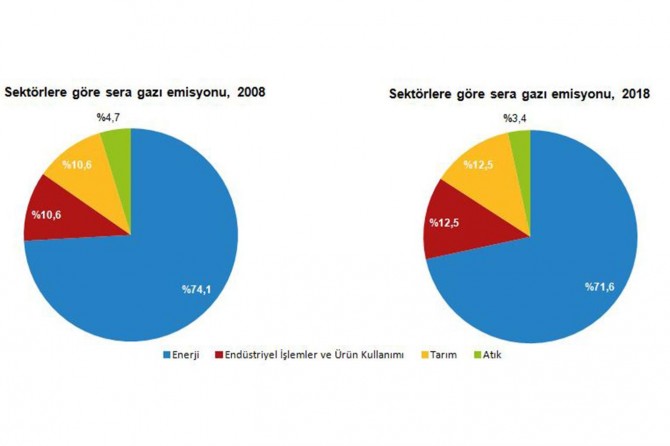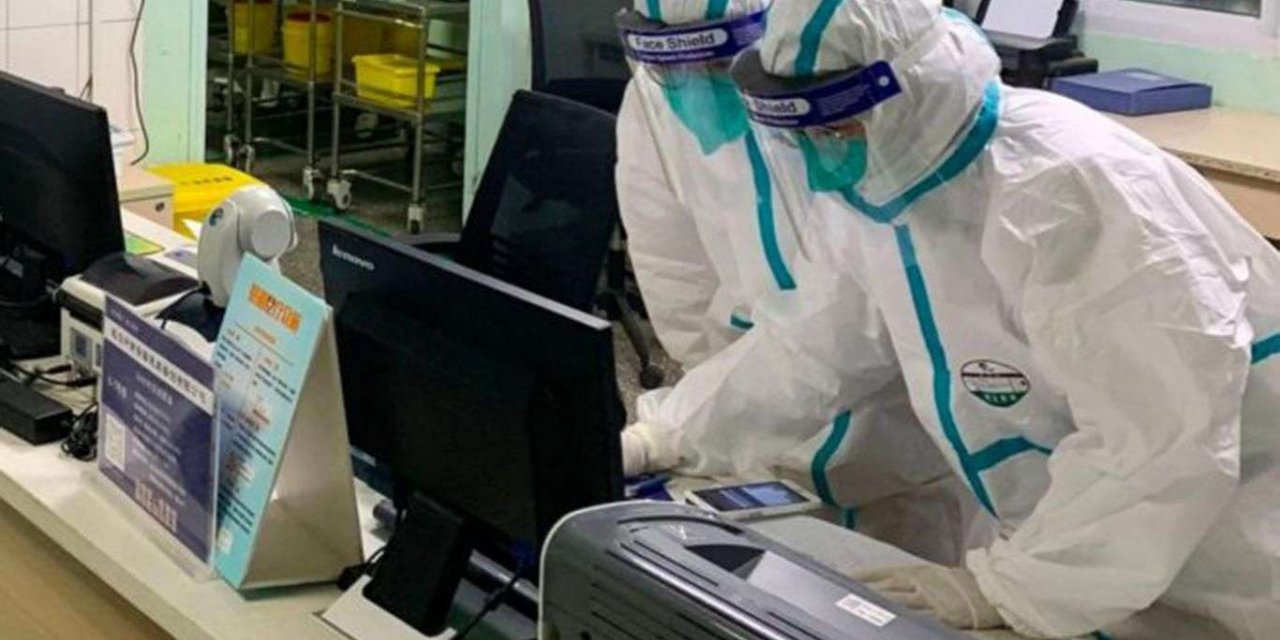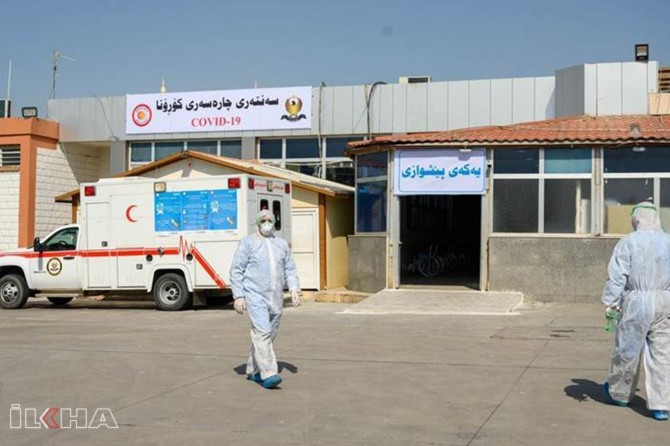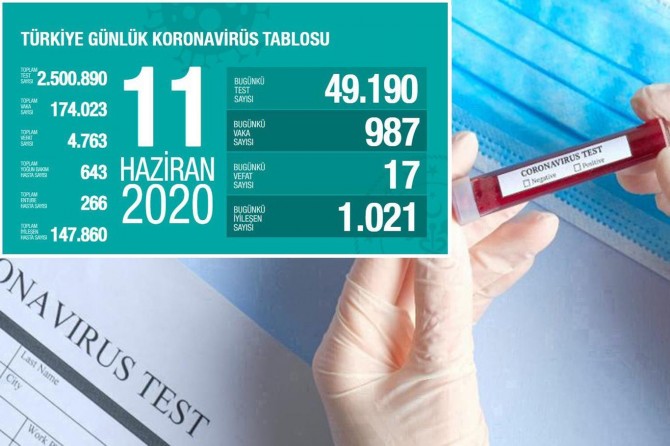
Turkey’s greenhouse gas emissions calculated as 520.9 Mt CO2 equivalent
Since 2014, Turkish Statistical Institute (TurkStat) has been issuing publications on special occasions with reference to the importance of the day.
TurkStat has presented a summary of environmental statistics in the press release "Statistics on Environment, 2018" for World Environment Day.
Greenhouse gas emissions were calculated as 520.9 Mt CO2 equivalent
The greenhouse gas inventory results revealed that the overall greenhouse gas (GHG) emissions as CO2 equivalent (eq.) for the year 2008 were 387.6 million tons (Mt) and for the year 2018 were 520.9 million tons (Mt). In the year 2008, the energy sector accounted for the largest share of GHG emissions at 74.1%. The energy sector was followed by the agricultural activities with 10.6%, the industrial processes and product use with 10.6% and the waste with 4.7% for 2008, whereas these share figures were calculated as 71.6% for the energy sector, 12.5% for agricultural activities, 12.5% for the industrial processes and product use, and 3.4% for waste for the year 2018. CO2 eq. emissions per capita was calculated as 6.4 tons and emission intensity was calculated as 0.14 kg CO2 eq./GDP (TL) for the year 2018.
17.5 billion m3 of water was abstracted from the environment
17.5 billion m3 of water was abstracted from the environment in 2018 in order to be distributed via municipalities and villages' water supply networks, and used by manufacturing industry establishments, thermal power plants, organized industrial zones and mining establishments, whereas 14.7 billion m3 of water was abstracted from the environment in 2014.
Out of the total amount of water, 56.2% was abstracted from sea, 15.1% from dams, 14% from wells, 8.7% from springs and 5.9% from other sources in 2018, whereas 55% was abstracted from sea, 14.1% from wells, 13.8% from dams, 9.4% from springs and 7.7% from other sources in 2014.
Out of the total amount of water abstracted from the environment, 44.9% was abstracted by thermal power plants, 35.3% by municipalities, 15.3% by manufacturing industry establishments, 2.2% by villages, 1.4% by mining establishments and 0.9% by organized industrial zones in 2018, whereas 44.3% was abstracted by thermal power plants, 35.5% by municipalities, 14.9% by manufacturing industry establishments, 2.9% by villages, 1.4% by mining establishments and 1% by organized industrial zones in 2014.
98.6% of the population was served by water supply networks
98.6% of the municipal population, 99.4% of the rural population and 98.6% of the total population was served by water supply networks in 2018, whereas 97.3% of the municipal population, 99.1% of the rural population and 97.4% of the total population was served by water supply networks in 2014.
77.4% of wastewater was discharged to sea
14.8 billion m3 of wastewater was discharged to the environment in 2018, whereas 12.7 billion m3 of wastewater was discharged to the environment by municipalities, villages, manufacturing industry establishments, thermal power plants, organized industrial zones, and mining establishments in 2014. Out of the total amount of wastewater discharged to the environment, 77.7% was discharged to sea, 18.4% to rivers, and 3.9% to other receiving bodies in 2014. On the other hand, 77.4% was discharged to sea, 18.7% to rivers, and 3.8% to other receiving bodies in 2018.
Out of the total amount of wastewater discharged to the environment, 50.4% was discharged by thermal power plants, 32.4% by municipalities, 13.5% by manufacturing industry establishments, 1.7% by organized industrial zones, 1.1% by mining establishments and 0.9% by villages in 2014. Out of the total amount of wastewater discharged to the environment, 51% was discharged by thermal power plants, 30.8% by municipalities, 14.7% by manufacturing industry establishments, 1.6% by organized industrial zones, 1.1% by mining establishments and 0.8% by villages in 2018.
Sectors, abstracted the most water from the environment and discharged the most wastewater to the environment in 2018, are thermal power plants, municipalities and manufacturing industry establishments, respectively.
88.5% of population was served by sewerage systems
90.7% of the municipal population, 55.5% of the village population and 88.5% of the total population was served by sewerage systems in 2018, whereas 89.7% of the municipal population, 48.9% of the village population and 87% of the total population was served by sewerage systems in 2014.
In 2014, the wastewater discharged by 68.1% of the municipal population, 7.4% of the village population and 64% of the total population was treated. In 2018, the wastewater discharged by 78.7% of the municipal population, 10.2% of the village population and 74.5% of the total population was treated.
15.1 million tons of hazardous waste was generated
Out of 37.1 million tons of waste generated by manufacturing industry establishments, thermal power plants, organized industrial zones, mining establishments and health institutions, 3.4 million tons was hazardous in 2010. On the other hand, out of 66.8 million tons of waste generated in 2018, 15.1 million tons was hazardous. While 725 million tons of overburden was generated by mining sector in 2010, it was 795 million tons in 2018.
98.8% of municipal population was served by waste collection services
According to municipal waste statistics results, 1 395 out of 1 399 municipalities provided waste collection services in 2018, while 1 390 out of 1 397 municipalities provided waste collection services in 2016.
32.2 million tons of waste was collected by municipalities in 2018 and 31.6 million tons in 2016. Out of total amount of waste collected, 61.2% was transferred to controlled landfill sites, 28.8% to municipal dumping sites, 9.3% to other recovery facilities, 0.5% to compost facilities, whereas 0.2% was disposed of by other disposal methods in 2016. Out of total amount of waste collected, 67.2% was delivered to controlled landfill sites, 20.2% to municipal dumping sites and 0.4% to compost facilities, while 0.2% was disposed of by other disposal methods in 2018. 11.9% of total amount of waste collected in 2018 was sent to other recovery facilities.
89 thousand tons of medical waste was collected
In 2010, 60 thousand tons of medical waste was collected from health institutions (university hospitals and their clinics, general purpose hospitals and their clinics, maternity hospitals and their clinics). On the other hand, 89 thousand tons of medical waste was collected in 2018.
Out of total medical waste collected in 2010, 63% without sterilization, and 27.4% with sterilization were transferred to storage areas, and 9.2% to incineration facilities, while 0.4% was disposed of by other methods. Out of total medical waste collected in 2018, 92.3% was sterilized and sent to landfill sites, and 7.7% was disposed of in incineration plants.
2,223 waste disposal and recovery facilities were in operation
A total number of 985 waste disposal and recovery facilities having a license or a temporary license or regardless of license, operated by or on behalf of municipalities were in operation in 2014, whereas a total number of 2 223 waste disposal and recovery facilities were in operation in 2018. While 117 of the total treatment facilities were waste disposal facilities and 868 were waste recovery facilities in 2014, 166 of the total treatment facilities were waste disposal facilities and 2 057 were waste recovery facilities in 2018. 56 million tons of waste was landfilled in landfill facilities, 494 thousand tons of waste was incinerated in incineration plants and 48 million tons of waste was recovered in recovery facilities in 2018, whereas 41 million tons of waste was landfilled in landfill facilities, 43 thousand tons of waste incinerated in incineration plants and 20 million tons of waste was recovered in recovery facilities in 2014.
Environmental protection expenditure was 38.2 billion TL
While environmental protection expenditure was realized as 21.4 billion TL in 2013, it was 38.2 billion TL in 2018. Out of total environmental protection expenditure, 64% was realized by financial and non-financial corporations, 28.4% by general government and non-profit institutions serving households and 7.6% by households in 2013. 56.6% was realized by financial and non-financial corporations, 36.3% by general government and non-profit institutions serving households and 7.1% by households in 2018. Whereas the share of environmental protection expenditure in gross domestic product was 1.2% in 2013, it was 1% in 2018.
Environmental tax revenue accrued as 91.1 billion TL
While total environmental taxes accrued as 34.7 billion TL in 2008, it was 91.1 billion TL in 2018. Out of total environmental taxes, energy taxes accounted for 70.7%, followed by transport taxes as 28%, and resource and pollution taxes as 1.3% in 2008. Energy taxes accounted for 63.3%, followed by transport taxes as 34.2%, and resource and pollution taxes as 2.5% in 2018.
Kaynak:![]()










Türkçe karakter kullanılmayan ve büyük harflerle yazılmış yorumlar onaylanmamaktadır.